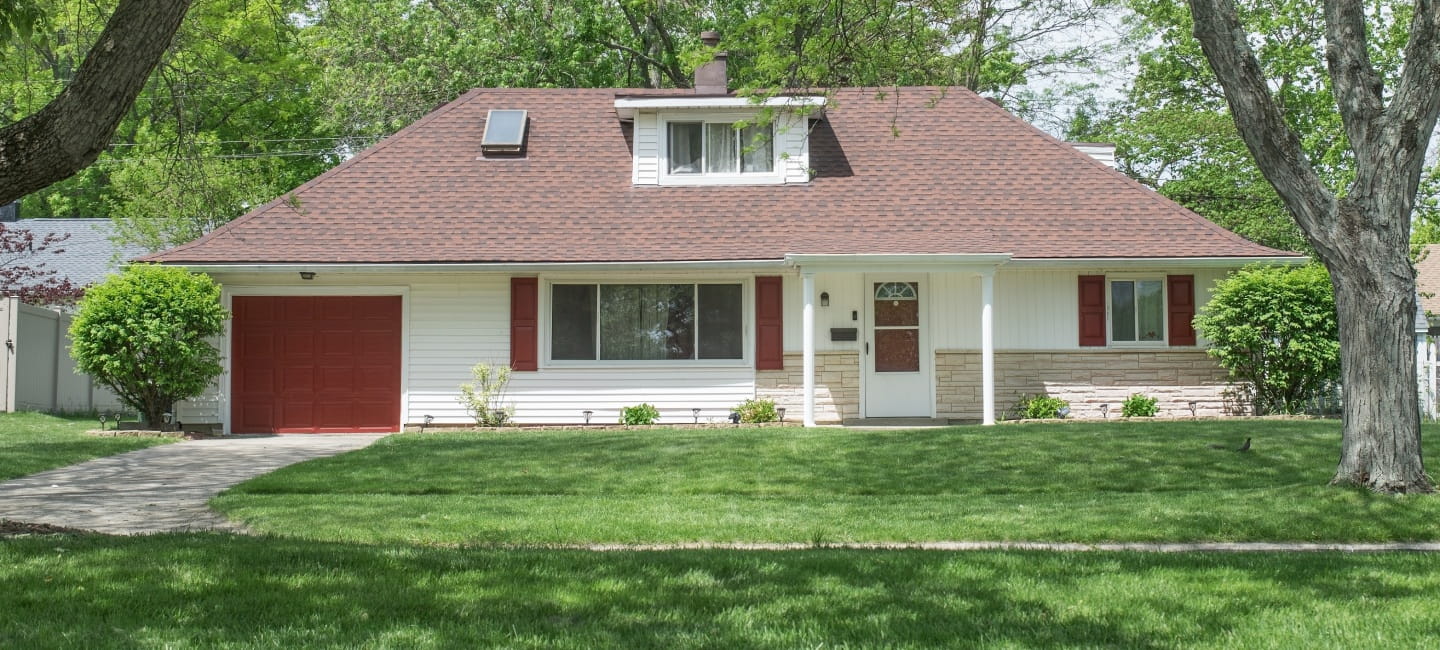This article is for general guidance only and is not financial or professional advice. Any links are for your own information, and do not constitute any form of recommendation by Saga. You should not solely rely on this information to make any decisions, and always obtain independent, professional advice for your own particular situation. All information in this article is correct at the time of publishing, but laws, entitlements, tax treatments and allowances may change in the future.
With new bungalows ‘all but disappeared’, according to the National House Building Council (NHBC), classic housing stock favoured by the over 50s in retirement is in short supply.
With the traditional route of buying a place with a decent amount of outside space and no stairs hugely narrowed, what options do potential downsizers need to consider if they want to go somewhere smaller or more cost effective?
A few years ago, HomeOwners Alliance conducted research into the post-55 demographic and found people wanted somewhere well-built and spacious, with parking, low running costs, proximity to shops and good transport links. For a third of those aged 55 and over, living on one level was also important.
Since the research was conducted, its CEO Paula Higgins believes that list has only become longer. She says: “Many people would add ‘somewhere that allows me to help my children’ onto that list.
“Our research has shown that the bank of mum and dad may be downsizing earlier because they want to help their children to buy a home.”
She adds: “When you have a quite specific list of wants, it can be hard to find the right place to move to.”
If you add the high cost of moving into the equation, it’s no wonder that many hesitate to actually leave the place they’re in, staying in homes that are no longer relevant to their needs (or budget).
When thinking about moving, it’s also worth considering the running costs of a new property you’re looking to move into.
Find out the council tax bands and scrutinise its energy performance certificate (EPC). If you find a well-insulated home, it could cut your bills.
If you’re considering downsizing to a smaller property, don’t forget Stamp Duty. It's currently at 5% for homes valued between £250,001 and £925,000; 10% up to the next threshold of £1.5m and 12% for properties worth more than that.
There’s been much debate around the notion of scrapping this for downsizers, with campaigners saying it would ‘free up’ a lot of housing, as Stamp Duty is often one of the biggest blockers for potentially moving to a better-fitting house.
The bungalow has traditionally been the go-to spot for downsizing, and for good reason. With many built between the 1950s and 1970s, they’re often on large plots, with spacious rooms and decent gardens.
With no stairs, they make a lot of sense for people who have mobility in mind and are often found in suburban areas with good facilities and transport connections.
The trouble is there’s not enough of them to go around. According to the NHBC, one-storey homes are “on the critically endangered list” after the numbers of new bungalows under construction hit an 80-year low, with just 228 new bungalows registered to be built between July and September 2024.
The other reason is that the one-storey homes, once undesirable to young families, are now sought after by all age groups because of the space and development potential they offer.
For older homebuyers, that means stiffer competition for bungalows, and prices have risen as a result. According to estate agent Knight Frank, the price of a bungalow rose 17% from May 2021 to May 2023, compared to a jump of 13% for houses and 5% for flats.
Although bungalows are proving a good investment during this surge in interest, the relatively high price you pay initially may be off-putting for people who want to release a decent amount of equity when they downsize from a larger home.
Finding the right one can also be a challenge. Higgins says: “[Bungalows] can be very hard to get so you can have bidding wars. We have had people come to our site who are desperately waiting for them to come up.”
With bungalows in short supply, simply moving to a smaller house is the next best option for some.
Losing a bedroom is a straightforward way to free up equity for many, although how much money you'll make depends on where you are moving from and to.
The profits of downsizing from a four-bedroom to a two-bedroom house could net Londoners aged between 65 and 69 a decent profit.
It’s large enough that it could be used to buy an annuity worth an additional £2,523 each month (at the time of writing) for the rest of their retirement, according to calculations by estate agent Savills.
However, in the North East, where profits were the lowest, downsizers could still benefit from an additional £826 a month. (Of course, these numbers are often best-case scenario - do your own research to see what kind of profit you can realise by moving to cheaper home.)
Again, with smaller houses, you may end up competing with younger buyers as they scramble to get onto the property ladder, so you might still find yourself in a bidding war.
Smart flats and town house developments are growing in popularity among older downsizers.
Estate agent Foxtons says that over-55s are a key group driving the demand for new homes in London, forgoing an escape to the country for the lifestyle benefits of a new-build development in a central location.
Joel Ellis-Duffy, Foxtons Sales Director, New Homes, says: “[Older buyers] love the ease of moving into a brand-new home. Everything from the simple buying process, lateral spaces, lifts, brand new appliances, on-site facilities and estate management mean downsizers can relax and enjoy their home.”
These developments may be close to transport hubs and healthcare, as well as restaurants and theatres.
Higgins’ own parents have made that move, buying in a block in West London with a swimming pool and a host of amenities on their doorstep.
“They travel a lot and so love being able to lock up their flat and head quickly to the airport,” she says.
“They enjoy swimming in the pool every day, which is great for their health, and they’ve even encouraged friends of theirs to downsize and make a similar move.”
But switching from a family home to a small flat can be a shock for some.
Higgins warns: “These properties can have really hefty service charges, and you need to be able to understand them and possibly even challenge them.
“With a leasehold, it can be frustrating not to have full control over your property as you might have done before.”
As with any house move, at whichever life stage, buying a new home requires a cool head and careful thought.
For those living in a house with empty bedrooms it can be a chance to make a fresh start, with lower bills and less maintenance.
But it’s good to consider all your options before rushing into a decision. For instance, if you want to remain in place, there are other things you can consider. For instance, the Rent a Room scheme allows you to make £7,500 tax-free per year through letting out furnished accommodation in your home, and this can help offset any shortfalls in your budget.
But if the reasons for moving are wider than just financial, you’ll need to weigh up what you want, do some sums, and work out whether a new home – be it a bungalow, new build or simply a smaller house - will deliver the changes you need.

